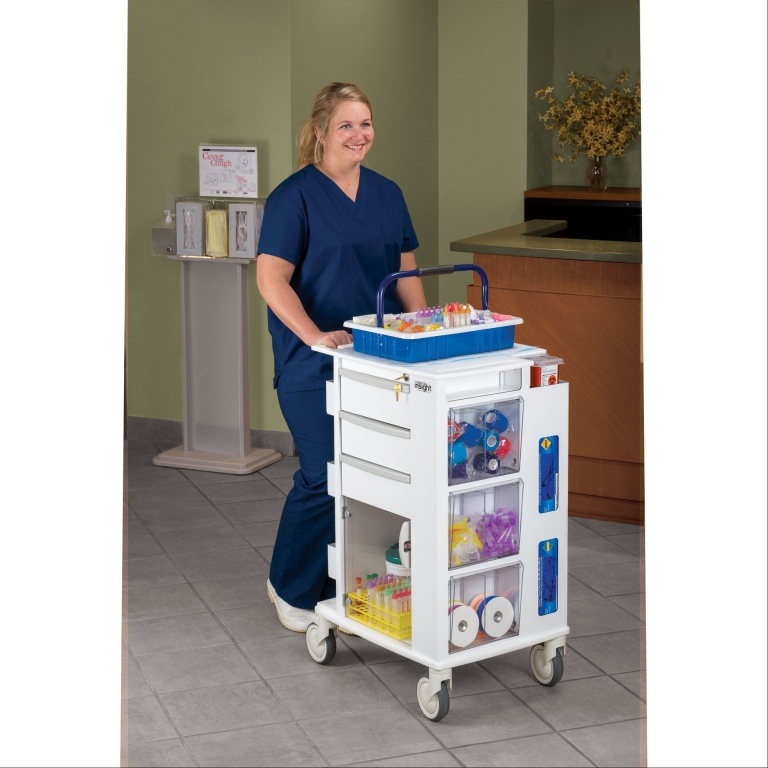How to Become a Phlebotomy Technician: Your Ultimate Guide to a Rewarding Healthcare Career
Are you interested in a healthcare career that combines patient interaction with vital medical procedures? Becoming a phlebotomy technician might be the perfect fit! This rewarding profession focuses on drawing blood samples for laboratory testing, vital for accurate diagnoses and patient care. Whether you’re starting fresh or transitioning from another healthcare role, this comprehensive guide will walk you through the steps to become a certified phlebotomy technician, the benefits of the profession, practical tips, and more.
Introduction: Why Choose a Career as a Phlebotomy Technician?
Phlebotomy technicians play a crucial role in the healthcare system. They work closely with patients, healthcare providers, and laboratory teams to ensure blood samples are collected correctly and efficiently. This career offers a blend of technical skill, patient care, and adaptability, making it ideal for those passionate about making a tangible difference in patients’ lives. Additionally, the demand for phlebotomy technicians is rising due to increased healthcare needs, making it a stable and lucrative career option.
What Is a Phlebotomy technician?
A phlebotomy technician, also known as a phlebotomist, specializes in drawing blood from patients for laboratory testing, transfusions, donations, or research. They must ensure the procedure is safe, pleasant, and accurate. successful phlebotomists possess a blend of technical skills, patience, and excellent communication abilities.
How to Become a Phlebotomy Technician
1.Understand the Educational Requirements
Most employers require a high school diploma or GED to begin training as a phlebotomy technician.Some states or employers may prefer candidates with formal training or certifications. Pursuing relevant courses can give you a competitive edge.
2. Complete a Formal Phlebotomy Training Program
Enrolling in a recognized phlebotomy training program is highly recommended. these programs typically cover anatomy, blood collection techniques, safety protocols, and patient interaction. They can be offered through vocational schools, community colleges, or hospitals.
- Duration: usually 4-12 weeks
- Content: Anatomy, safety, practice blood draws, lab procedures
- format: Classroom, online, or hybrid
3.Gain Practical Experience
Most training programs include a clinical externship or hands-on practice. This real-world experience is essential to build confidence and proficiency in blood collection techniques.
4. Obtain certification
Certification is highly recommended and often necessary to increase job prospects. Organizations like the American Society of Phlebotomy Technicians (ASPT) and the National Healthcareer Association (NHA) offer recognized certifications. Certification requirements generally include completing a training program and passing an exam.
| Certification Body | Requirements | Exam Cost |
|---|---|---|
| ASPT | Completion of training + exam | $120 |
| NHA | Training + 1-year experience or equivalent | $105 |
5. obtain State Licensure (if required)
Some states require phlebotomists to be licensed or registered. Check your state’s requirements and obtain any necessary licenses.
6. Pursue Continuing Education & Certification Renewal
Keeping your skills up-to-date and renewing your certification regularly ensures ongoing employability and professional growth.
Practical Tips for Aspiring Phlebotomy Technicians
- Develop good communication skills: Patients might potentially be anxious; reassuring them is key.
- Practice essential techniques: Start with practice arms or simulators before working on real patients.
- Stay organized and detail-oriented: Proper labeling and documentation prevent errors.
- Learn safety protocols: Bloodborne pathogen safety is critical in this profession.
- Build a professional network: Connect with other healthcare professionals for job opportunities and mentorship.
The Benefits of a Career as a Phlebotomy Technician
Choosing a career as a phlebotomy technician offers numerous advantages:
- Job Stability: Growing demand in hospitals, clinics, and laboratories
- Quick Entry: Training programs frequently enough last just a few weeks to months
- Flexible Schedules: Many positions offer part-time, full-time, and shift options
- Rewarding Work: Making a difference in patients’ health and well-being
- Career Advancement: Opportunities to specialize or move into related healthcare roles
Case Studies & First-Hand Experiences
Many phlebotomists find their work fulfilling and impactful. As an example, Sarah, a certified phlebotomist, shared that her greatest reward is easing patients’ fears during blood draws and seeing how her work contributes to diagnoses and treatment plans. Another professional, Daniel, transitioned from a general lab tech to a specialized phlebotomist, illustrating the potential for career growth within healthcare.
Summary & Final Thoughts
Becoming a phlebotomy technician is an excellent choice for individuals seeking a meaningful, in-demand healthcare career with minimal initial training. By obtaining the necessary education, certification, and experience, you can embark on a rewarding journey that combines technical skills and compassionate patient care. With the healthcare sector continuously expanding, your role as a phlebotomist can offer job security, personal satisfaction, and opportunities for professional growth.
Ready to start your journey? Explore accredited training programs near you, gather the necessary requirements, and take the first step toward a fulfilling career in healthcare as a skilled phlebotomy technician!
